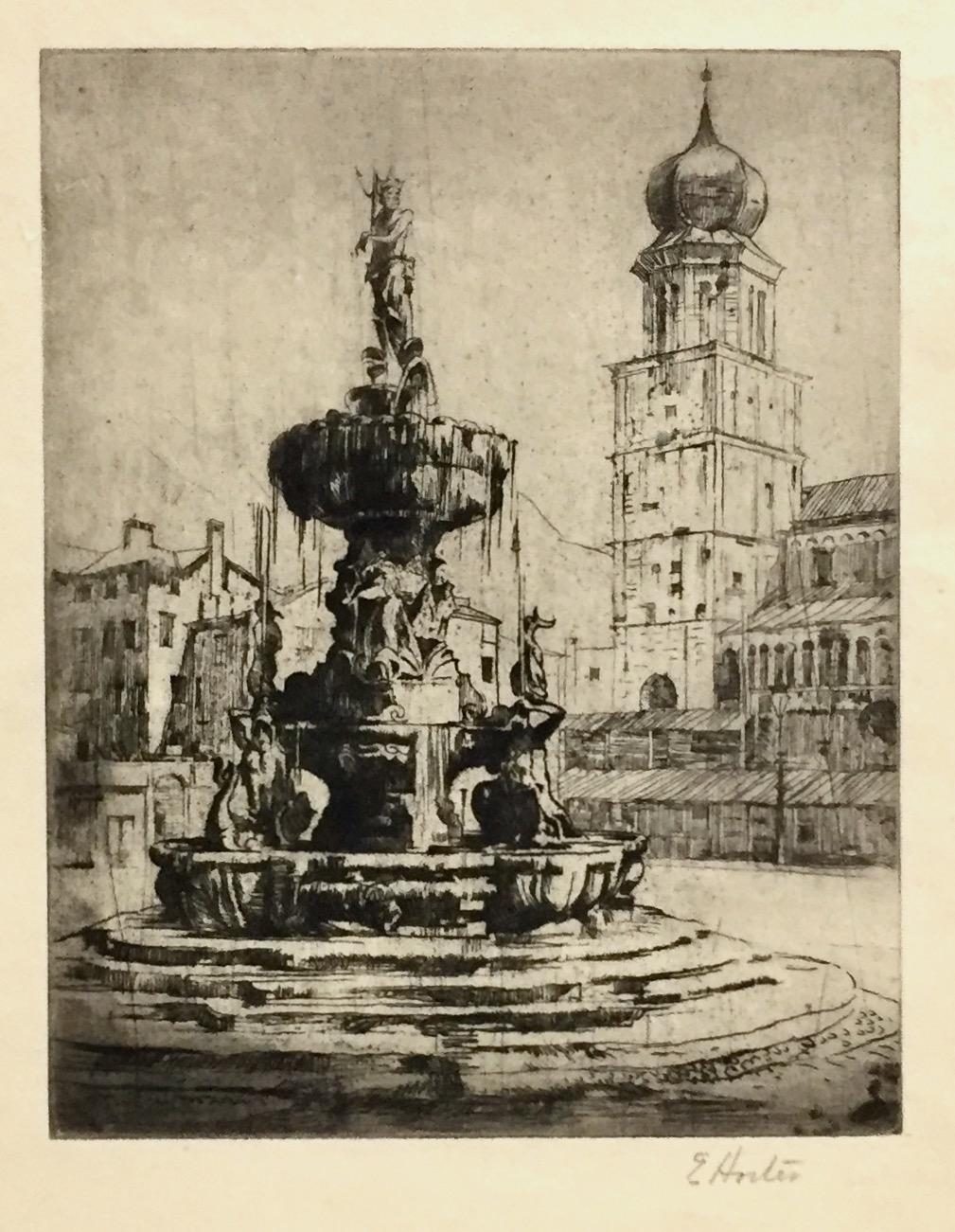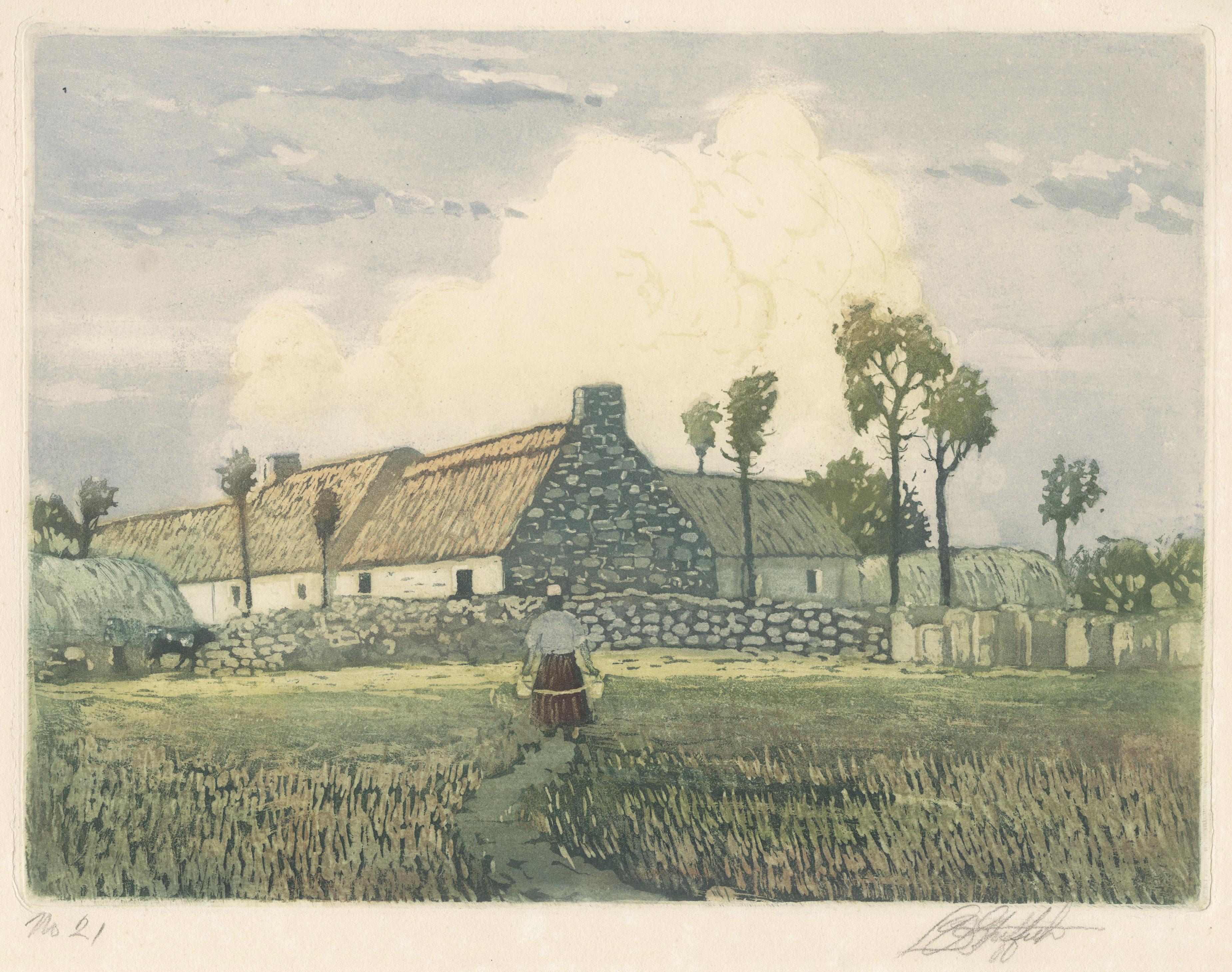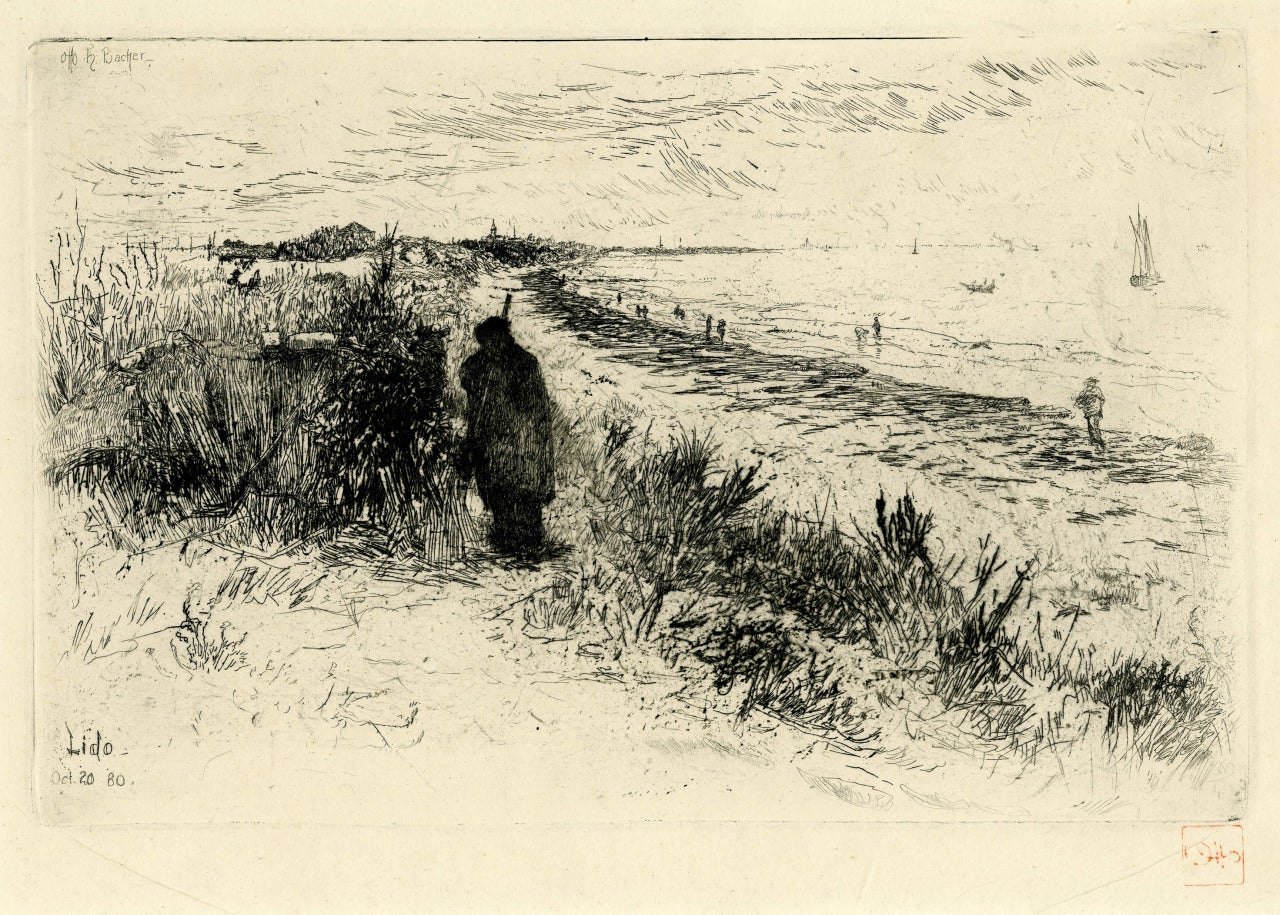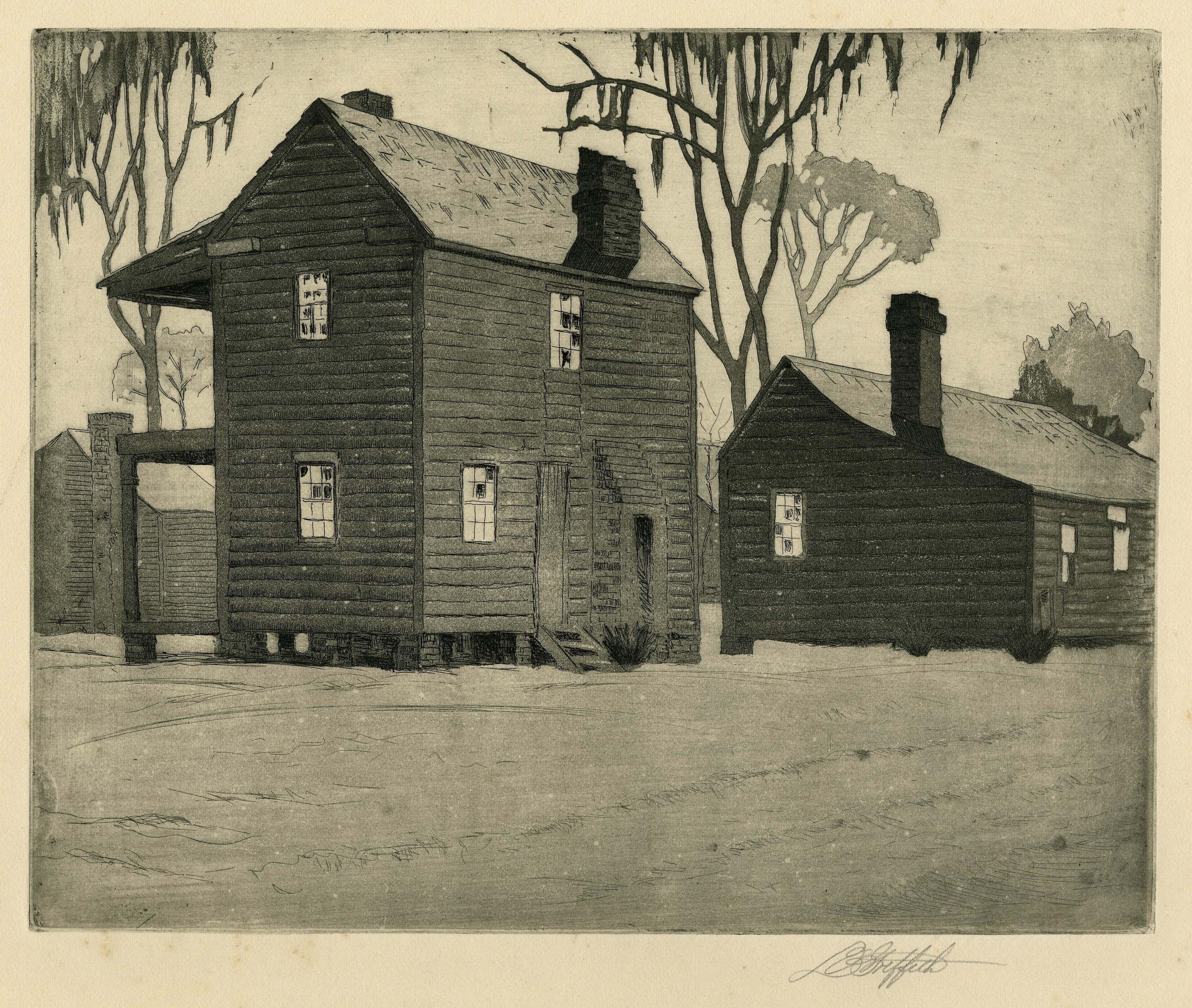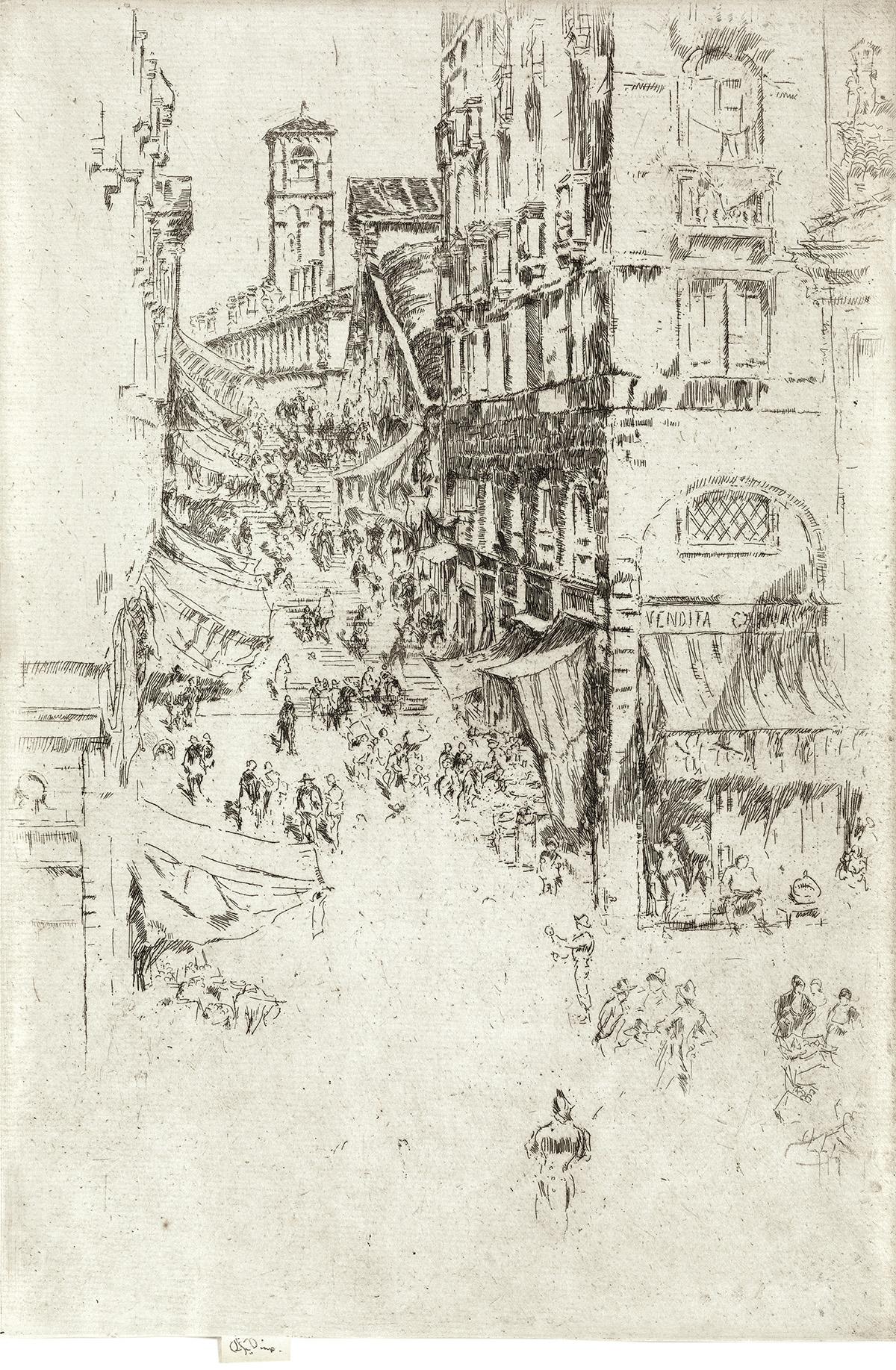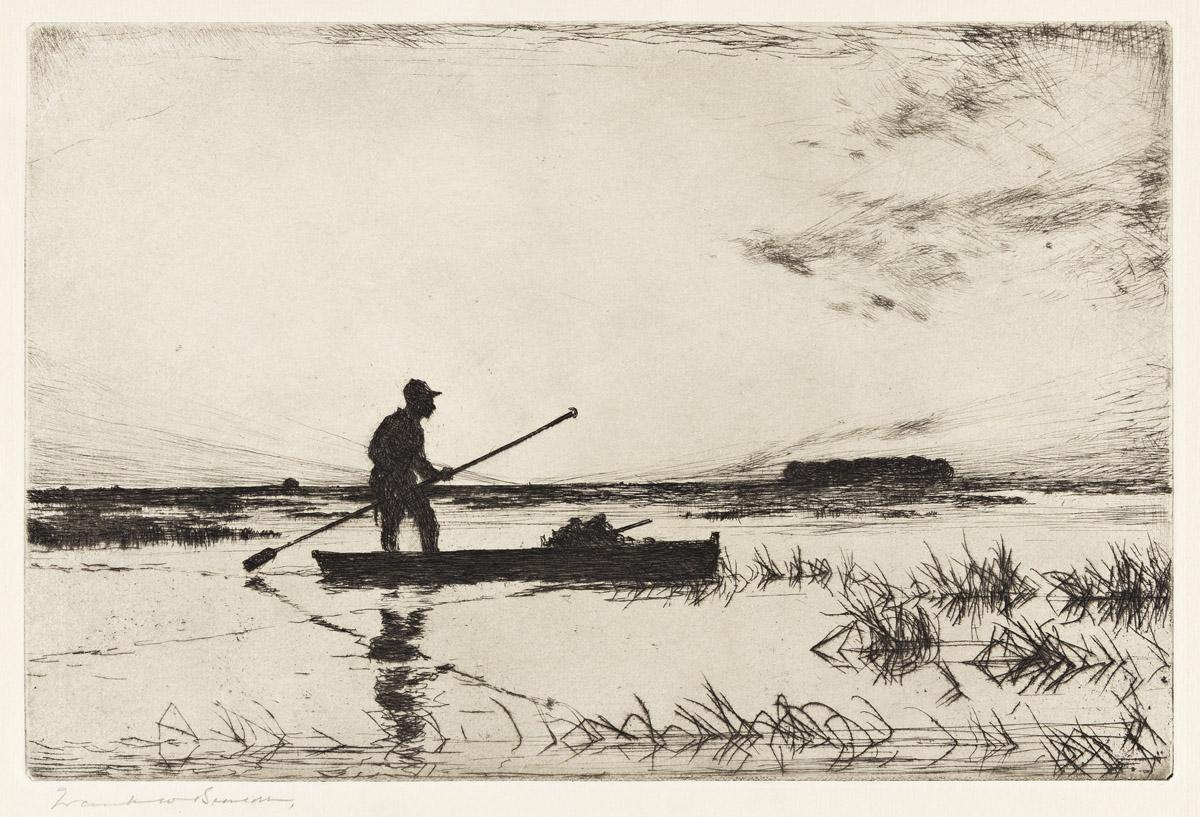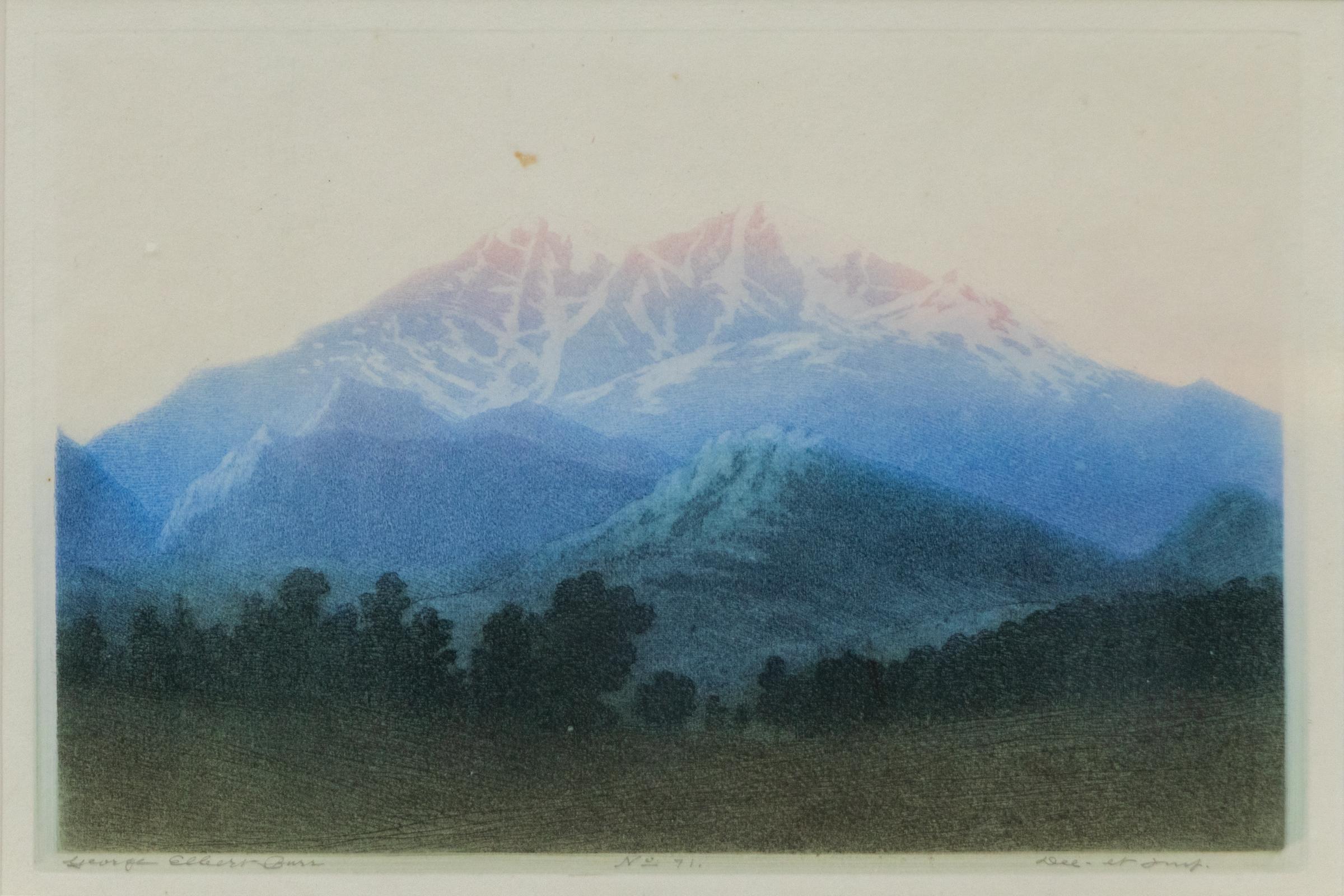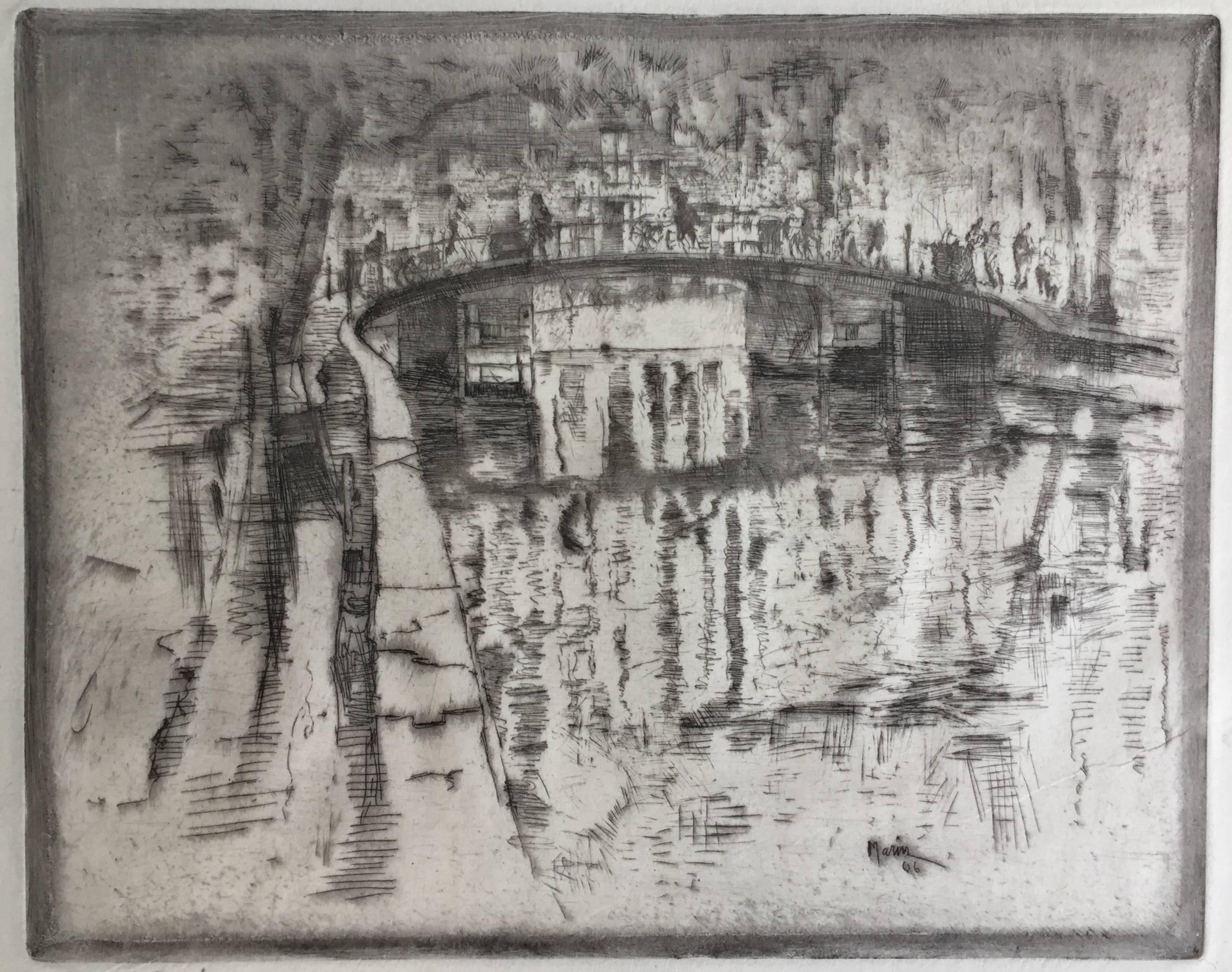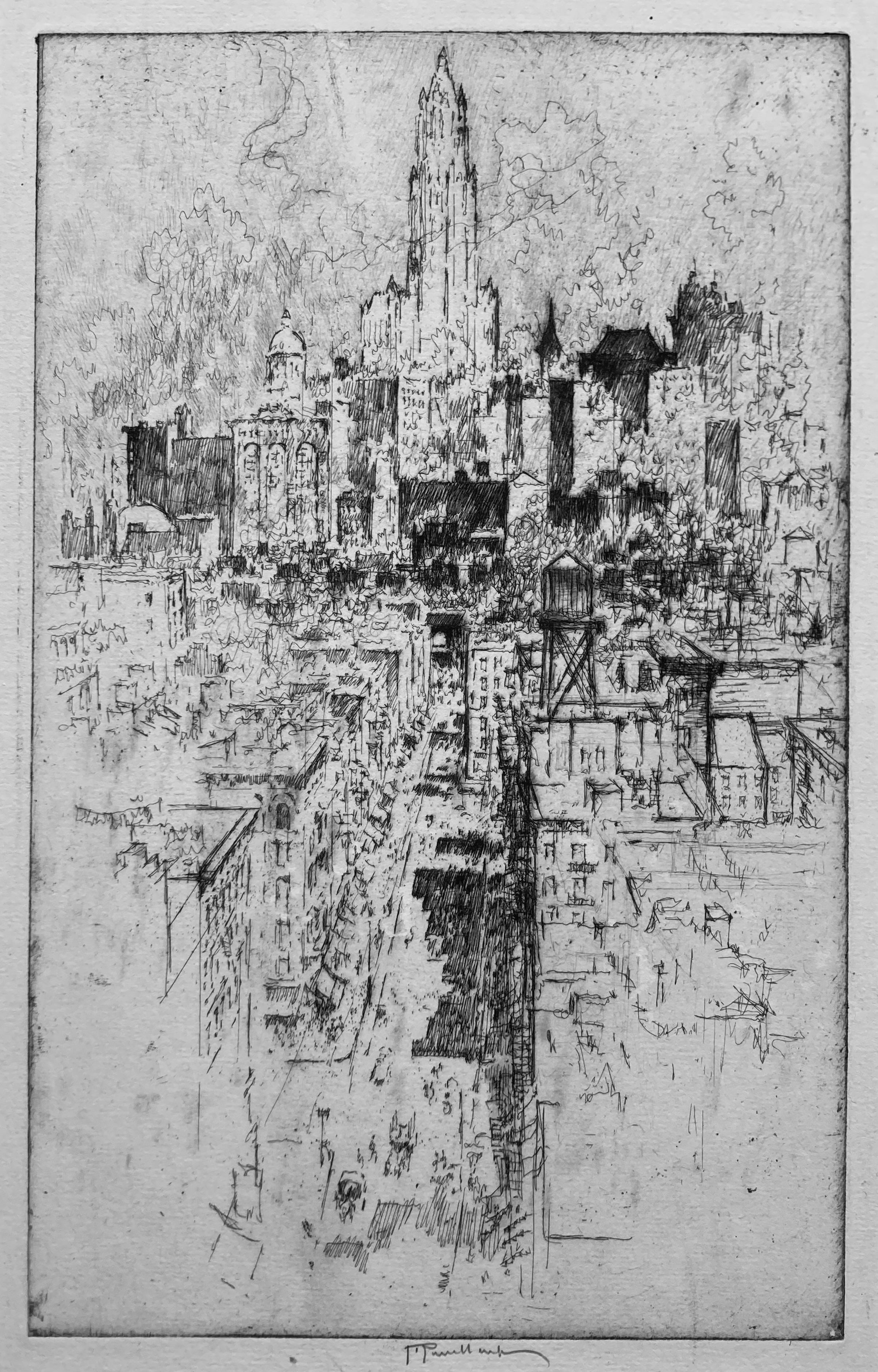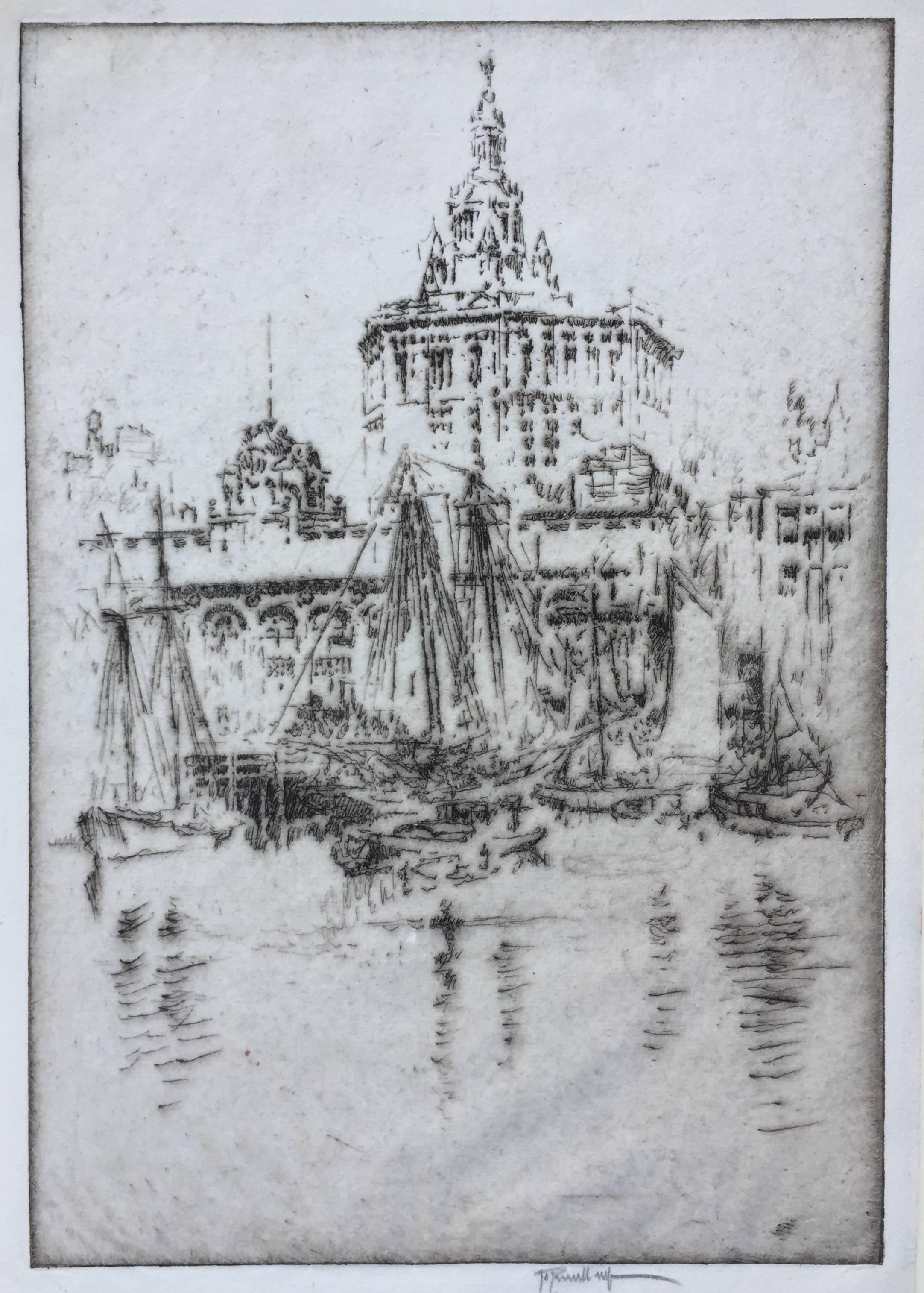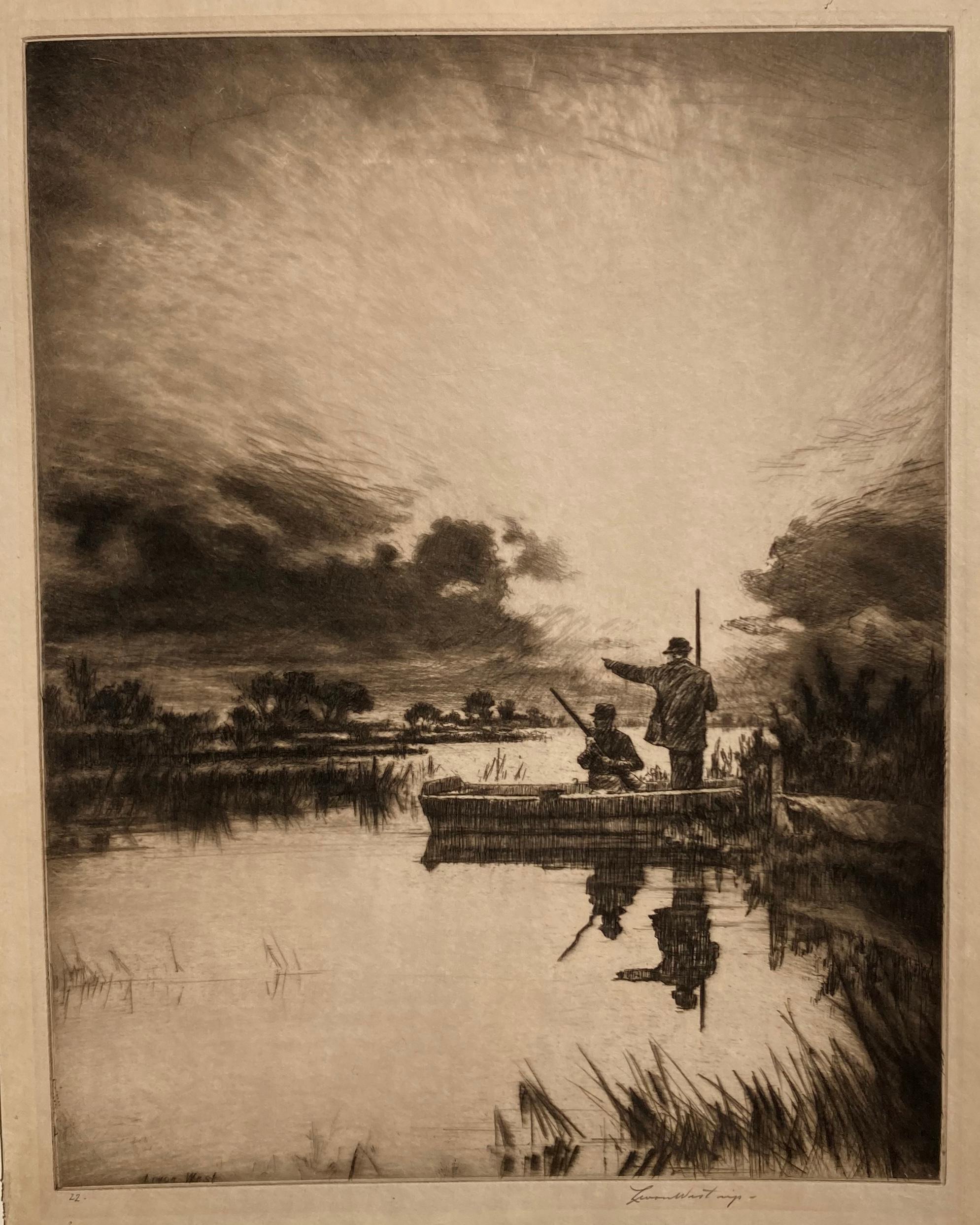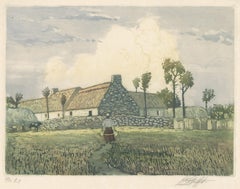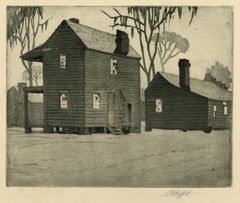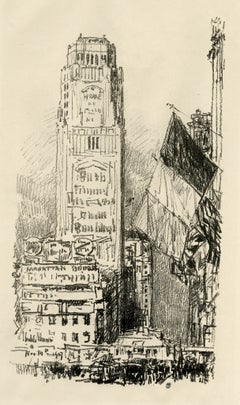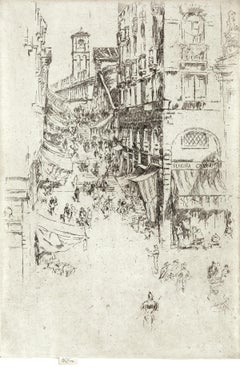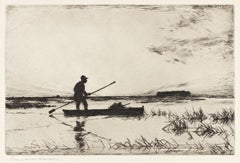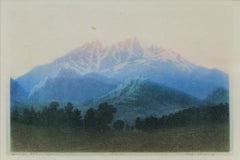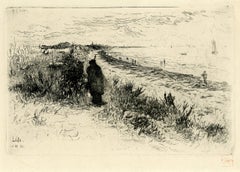
Lido
View Similar Items
Want more images or videos?
Request additional images or videos from the seller
1 of 9
Otto Henry BacherLido1880
1880
$800List Price
About the Item
- Creator:Otto Henry Bacher (1856-1909, American)
- Creation Year:1880
- Dimensions:Height: 7 in (17.78 cm)Width: 10.88 in (27.64 cm)
- Medium:
- Movement & Style:
- Period:
- Condition:Very fine impression printed with rich contrasts and detail.
- Gallery Location:Fairlawn, OH
- Reference Number:Seller: FA87351stDibs: G130708140179
About the Seller
5.0
Recognized Seller
These prestigious sellers are industry leaders and represent the highest echelon for item quality and design.
Gold Seller
Premium sellers maintaining a 4.3+ rating and 24-hour response times
Established in 1978
1stDibs seller since 2013
796 sales on 1stDibs
Typical response time: 1 hour
Associations
International Fine Print Dealers Association
Authenticity Guarantee
In the unlikely event there’s an issue with an item’s authenticity, contact us within 1 year for a full refund. DetailsMoney-Back Guarantee
If your item is not as described, is damaged in transit, or does not arrive, contact us within 7 days for a full refund. Details24-Hour Cancellation
You have a 24-hour grace period in which to reconsider your purchase, with no questions asked.Vetted Professional Sellers
Our world-class sellers must adhere to strict standards for service and quality, maintaining the integrity of our listings.Price-Match Guarantee
If you find that a seller listed the same item for a lower price elsewhere, we’ll match it.Trusted Global Delivery
Our best-in-class carrier network provides specialized shipping options worldwide, including custom delivery.More From This Seller
View AllBrittany Landscape with Figure
By Louis Oscar Griffith
Located in Fairlawn, OH
Brittany Landscape with Figure
Etching & color aquatint, c. 1920
Signed lower right (see photo)
Numbered lower left: "No. 21" (see photo)
An early color etching by the artist, based ...
Category
1920s American Impressionist Landscape Prints
Materials
Aquatint
Lido (Venice)
By Otto Henry Bacher
Located in Fairlawn, OH
Lido (Venice)
Etching on chine collee, 1880
Part of the artist's "Venice Set"
Signed upper right in plate :Otto H Bacher" (see photo)
Signed with the estate stamp, Lugt 2002 recto lower right beneath image. (see photo)
Created October 20, 1880
Reference: Andrew Venice No. 29
Provenance: Estate of the Artist
Otto H. Bacher (1856-1909)
Otto Henry Bacher was born in Cleveland, Ohio, to a family of German descent. He first studied art at the age of sixteen with local genre trompe l'oeil still-life artist, DeScott Evans. Although he studied with Evans for less than one year, Bacher's early work, comprised mainly of still lifes, betrays Evans's influence. After a short period in Philadelphia, where he studied at the Pennsylvania Academy of the Fine Arts, Bacher returned to Cleveland and met Willis Seaver Adams, an artist from Springfield, Massachusetts, who had just recently arrived upon the Cleveland art scene. Soon the two artists were rooming together. Adams was instrumental in the founding of the Cleveland Art Club, as well as the establishment of the Cleveland Academy of the Fine Arts, to the board of which Adams had Bacher appointed. Also during this time, Bacher began to learn the process of etching from local etcher and landscape painter Sion Longley Wenban.
In 1878, Bacher and Adams left for Europe. After stopping briefly in Scotland, Bacher went on to Munich, where he enrolled at the Royal Academy. He quickly tired of the rigors of the academy, and soon he was studying with Cincinnati artist Frank Duveneck, the prime American exponent of the Munich School. In 1879, Bacher made a trip to Florence with Duveneck as one of the celebrated "Duveneck Boys." Early the following year, the group proceeded to Venice, where Bacher and several other artists established studios in the Casa Jankovitz.
By this time an avid printmaker, Bacher had his etching press sent from Muni ch, and it was in his Venice studio that he taught Duveneck the rudiments of etching. Soon Bacher, Duveneck, and other members of the Duveneck circle were experimenting in printmaking. Among the group's contributions were some of the first American examples of monotypes, which they called "Bachertypes" because they were printed using Bacher's press.
It was also in Venice that Bacher met the venerable American expatriate artist, James McNeill Whistler. On learning of Bacher's press and his collection of etchings by Rembrandt, Whistler made himself a regular visitor to Bacher's studio, and he eventually took his own room in the Casa Jankovitz. Bacher spent much of the rest of 1880 with Whistler, the two artists sharing etching techniques. From Whistler, Bacher learned tone and line graduation; from Bacher, Whistler learned his etching techniques, including better ways of using the acid bath which produced less tedious and more efficient work. Bacher visited Whistler occasionally in the years that followed, and in 1908 he published With Whistler in Venice, his famous recollections of his time with the great artist.
Bacher spent the next two years traveling extensively throughout Italy, with Venice as the center of his operations, and he produced a number of important etchings of Italian subjects. Bacher sent several of these works to America in 1881 to be included in the Society of American artists exhibition that year, and had a similar group of works shown at the Royal Society of Painter-Etchers' first exhibition at the Hanover Gallery in London. Following the exhibition, Bacher, along with several other of the American contributors, was elected a Fellow of the Society. Bacher collected twelve of his etchings of Venetian subjects and sold them in bound volumes through his New York dealer, Frederick Keppel.
Bacher returned to Cleveland in January 1883 as a fully cosmopolitan artist. He set up a lavish studio furnished with exotic items and objets-d'art he had collected on his travels, and began to hold art classes as a means to supplement his income. He soon joined with Joseph De Camp in forming a summer sketch class in Richfield, Ohio. Bacher and De Camp also planned the Cleveland Room for a major loan exhibition in Detroit that year. During this period, Bacher increasingly painted in oil, and he began to produce sun-dappled canvases in an impressionistic mode.
Unable to sell any paintings from this early period, however, Bacher left Cleveland for Paris in 1885, where he planned to undertake further studies. Stopping first in London to visit Whistler, Bacher stayed only briefly in Paris before heading to Venice, where he spent the remainder of the year. In January 1886, Bacher returned to Paris and enrolled at the Académie Julian, and also entered the atelier of Emile-Auguste Carolus-Duran. The life of the student seems never to have suited Bacher, as he stayed in Paris only through June, before departing again for Venice. For the next six months he, Robert Blum, and Charles Ulrich...
Category
1880s American Impressionist Prints and Multiples
Materials
Etching
Desolation, S.C. or Deserted Cabins, Beauford, S.C.
By Louis Oscar Griffith
Located in Fairlawn, OH
Desolation, S.C. or Deserted Cabins, Beauford, S.C.
Etching & Aquatint, c. 1930
Signed by the artist in pencil lower right (see photo)
Annotated "Trial Proof" in pencil lower left corner of sheet
Provenance: Estate of the artist
By decent
Note: An impression of this image is in the collection of the Greenville County Museum of Art, Greenville, South Carolina
Condition: Excellent
Plate/Image size: 8 x 9 3/4 inches
Sheet size: 12 7/8 x 15 inches
Louis Oscar Griffith
(1875-1956)
Born in Greencastle, Indiana, Griffith grew up in Dallas, Texas where Texas artist and teacher Charles Franklin Reaugh recognized young “Griff’s” artistic talent. At age 18, Griffith moved to St. Louis where he attended the St. Louis School of Fine Arts.
In 1895, he moved to Chicago where he worked making color prints for the firm Barnes and Crosby. He attended the Art Institute of Chicago and during a brief stay in New York, the National Academy of Design. A successful commercial artist with a studio in the Chicago Loop...
Category
1930s American Impressionist Landscape Prints
Materials
Aquatint
New York Bouquet
By Childe Hassam
Located in Fairlawn, OH
New York Bouquet
Lithograph, 1917
Edition: 93
Signed with the artist's cipher in pencil lower right (see photo)
This lithograph is inspired by Hassam's oil painting of the same title...
Category
1910s American Impressionist Landscape Prints
Materials
Lithograph
Old Houses in Amsterdam
By T.F. Simon
Located in Fairlawn, OH
Old Houses in Amsterdam
Drypoint, 1909
Signed and dedicated in pencil lower right.
"A Mr. H. A. Webster, bien sympathiquement, T.F. Simon, Paris 26/10"
Simon...
Category
Early 1900s American Impressionist Prints and Multiples
Materials
Drypoint
Blossom Time in Tokyo
By Helen Hyde
Located in Fairlawn, OH
Blossom Time in Tokyo
Color woodcut, 1914
Signed by the artist in pencil on the image (see photo)
Signed in the block with the artist red stamp and her initials (see photo)
Condition...
Category
1910s American Impressionist Figurative Prints
Materials
Woodcut
You May Also Like
Earl Horter, (European Fountain)
By Earl Horter
Located in New York, NY
Signed in pencil. A European town square with fountain and tower.
Category
Early 20th Century American Impressionist Landscape Prints
Materials
Etching
The Rialto
By James Abbott McNeill Whistler
Located in New York, NY
A superb, richly-inked impression of this etching and drypoint, printed in dark brownish black on antique cream laid paper. Second state (of 3). Edition of approximately 30. Signed w...
Category
Late 19th Century American Impressionist Landscape Prints
Materials
Drypoint, Etching
The Punter
By Frank Benson
Located in New York, NY
A superb, richly-inked impression of this etching. Edition of 150. Signed in pencil, lower left.
Category
1920s American Impressionist Abstract Prints
Materials
Etching
Longs Peak, Estes Park, Colorado, No. 2, Original 1920s Aquatint
By George Elbert Burr
Located in Denver, CO
This original vintage color aquatint etching captures the breathtaking beauty of Longs Peak and Mount Meeker, as seen from Rocky Mountain National Park near Estes Park, Colorado. Cre...
Category
1920s American Impressionist Landscape Prints
Materials
Aquatint
CANAL BRIDGE AMSTERDAM
By John Marin
Located in Santa Monica, CA
JOHN MARIN (1872 -1953)
CANAL BRIDGE AMSTERDAM, 1906 (Zigrosser 13 i/ii)
Etching, drypoint and plate tone. A PROOF IMPRESSION of the 1st state, Annotated...
Category
Early 1900s American Impressionist Landscape Prints
Materials
Etching
$5,100 Sale Price
26% Off
UP TO THE WOOLWORTH
By Joseph Pennell
Located in Santa Monica, CA
JOSEPH PENNELL (1857- 1926)
UP TO THE WOOLWORTH 1915 (Wuerth 673)
Etching, signed in pencil. Early state before additional work, especially before extensive darkening in the sky. I...
Category
1910s American Impressionist Landscape Prints
Materials
Etching
Recently Viewed
View AllMore Ways To Browse
Alpine Poster
Ando Hiroshige
Basquiat Nude
Days Forum
Dollar Bill Sculpture
French Riviera Poster
Graffiti Skateboard
Vintage Bomber Planes
Vintage Comic Covers
Vintage Marquee Sign
Vintage Poster Cigarette
Vintage Texas Posters
Ww1 Posters
1977 Salvador Dali
1984 Olympic Poster
Arezzo Vintage
David Roberts Egypt
Edinburgh Poster
